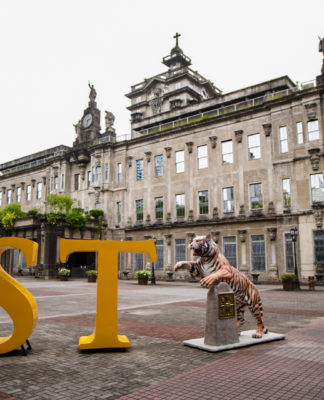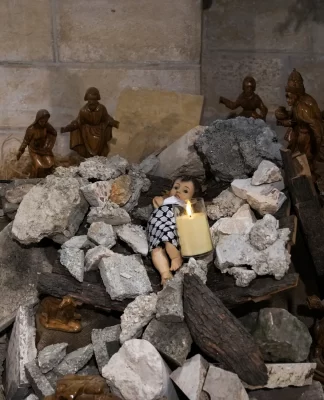UNTOLD narratives lie behind newspaper bylines.
The Martial Law era was a terrible period, but exciting times as well, for journalists. Unless they toed the line, every article against the dictatorship risked physical harm, if not death.
Such was the environment in which journalists like Alice Colet-Villadolid and the late Rommel Corro worked. Their stories were many and collectively, they formed part of the Filipino memory of that dark period in history.
Censorship and veiled threats
Villadolid, a former correspondent of the New York Times, realized the hazards of news writing when she wrote a 10-paragraph article about the proclamation of Martial Law and the phony ambush of then Defense Minister Juan Ponce Enrile.
“It was a short article but it came out the next day on the front page,” said Villadolid, who is now a Journalism professor at the Faculty of Arts and Letters.
According to her, the article was picked up by the Voice of America, the official broadcast institution of the American government, and served as the first report to come out abroad about the country’s condition under martial rule.
Because of this incident, then Minister of Information Francisco Tatad called and asked her not to use her Telex machine when filing stories to the New York Times desk until further notice.
“I was censored and sequestered,” she said.
Soon, conflict rose between the foreign press and the Marcos administration due to the widespread censorship.
“In November of 1972, the United States government got angry with Marcos and insisted that his government must let the media report,” she said.
The pressure prompted Marcos to relax his policy against media, if only for a time. Later on, he did not spare even members of the foreign press.
“Foreigners who dared to write something against the Marcoses were denied of their visas, harassed or detained,” Villadolid recalled.
Eventually, she was allowed to use her Telex machine provided that Malacañang would see a copy of the article before it was transmitted abroad.
“I had to go to the Malacañang every afternoon to show them my article to be filed to New York Times,” Villadolid said.
She informed her editor about the censorship and the New York Times addressed the situation by publishing a statement below her articles that said, “These stories were seen by the Philippine censors.”
“This was done to inform our readers that there may be changes in the story. That was how the media told them that there may be parts that were not covered since the article was already censored,” she added.
Through mutual linkages with Thomasians holding key positions in the government, Villadolid was able to surpass the threats and dangers implicated by the era.
“One reason I believed on why I did not suffer reprisal from the dictator Marcos was because the cabinet officials in charge of the press during that time were Thomasians,” she said.
Criticizing tyranny
The late Rommel Corro, who worked as desk editor for the Associated Press, transferred to Manila with his family during the height of Martial Law. He later on resigned and established Philippine Times in 1981. Together with Malaya, the Philippine Times was part of the mosquito press that critically scrutinized the authoritarian rule of Marcos.
Raymond, Rommel’s brother, recalled how his older sibling became a target of the Marcos administration due to the hard-hitting articles he wrote after the assassination of Benigno “Ninoy” Aquino, Jr.
“It was only Kuya’s paper that pinpointed the military on the assassination of Ninoy,” Raymond said. “All the other press including Malaya were afraid and somehow tamed.”
He also added that the hard-hitting and critical articles published in the Philippine Times placed their lives under serious threat, as military men once raided their office.
“Our friends from the media informed and helped us during that time. They [military] were really planning to plant a bomb to make Kuya look as if he was a member of the New People’s Army,” said Raymond, who was at that time working as a proofreader for the Philippine Times.
According to Raymond, it was after two days of hiding that his brother surrendered to the Vicar General of Camp Aguinaldo. Rommel was then detained for more than a year at the Camp Bagong Diwa after he was charged with inciting to sedition and after a one million libel suit was filed against him by then Commission on Elections chair Leonardo Perez.
“Kuya was incarcerated for more than a year. [Eventually] all charges were dropped and he was allowed by the Supreme Court to have his oral arguments,” the younger Corro said.
He also narrated that his brother refused the help of opposition lawyer Jose Diokno and preferred defending himself against oppressors.
“Feeling niya, ginagamit siya ng opposition. So he hired an ordinary lawyer where Kuya was in fact the one typing and doing his own papers for defense in the court,” Raymond said.
Martial Law’s aftermath
Years after the Martial Law was lifted, Raymond related that his brother’s fighting spirit did not falter.
“Ganun pa rin siya, hard-hitting as he was before and after the Martial Law. But being a good Christian, he [also] learned to forgive the Marcoses,” he said.
Rommel tried to revive the Philippine Times after it was closed down by the Marcos administration but due to financial constraints, his efforts did not materialize. He continued writing opinion columns and hard-hitting articles until his death in 1996 due to colon cancer.
The end of the Marcos regime provided a new start for Villadolid and her family. She eventually resigned from the New York Times and in 1988, she was appointed Executive Director of the Philippine Press Institute.
After 15 years of working as a correspondent of a foreign paper, Villadolid learned to perceive journalism as an “exacting profession.”
“During most of those years when the country was in a quite complex situation, [journalists] required skill and talent to write or broadcast about what was happening without getting reprisals,” she said.
















